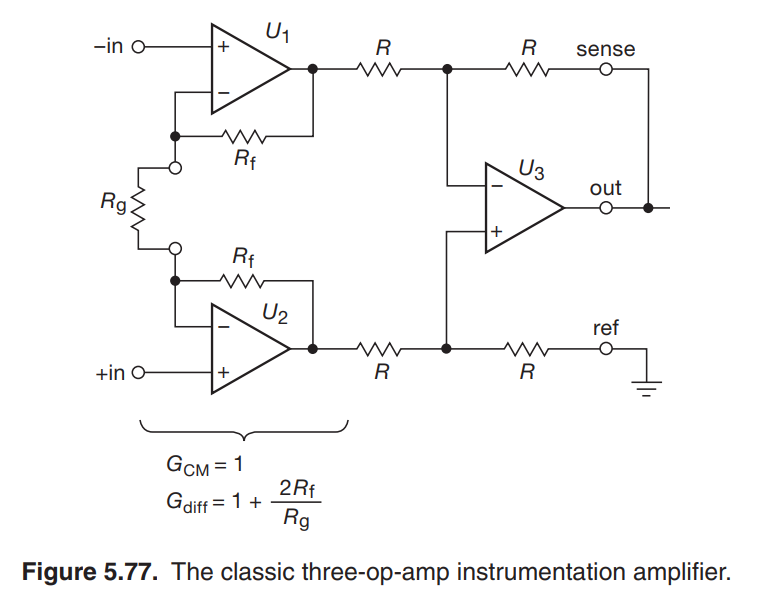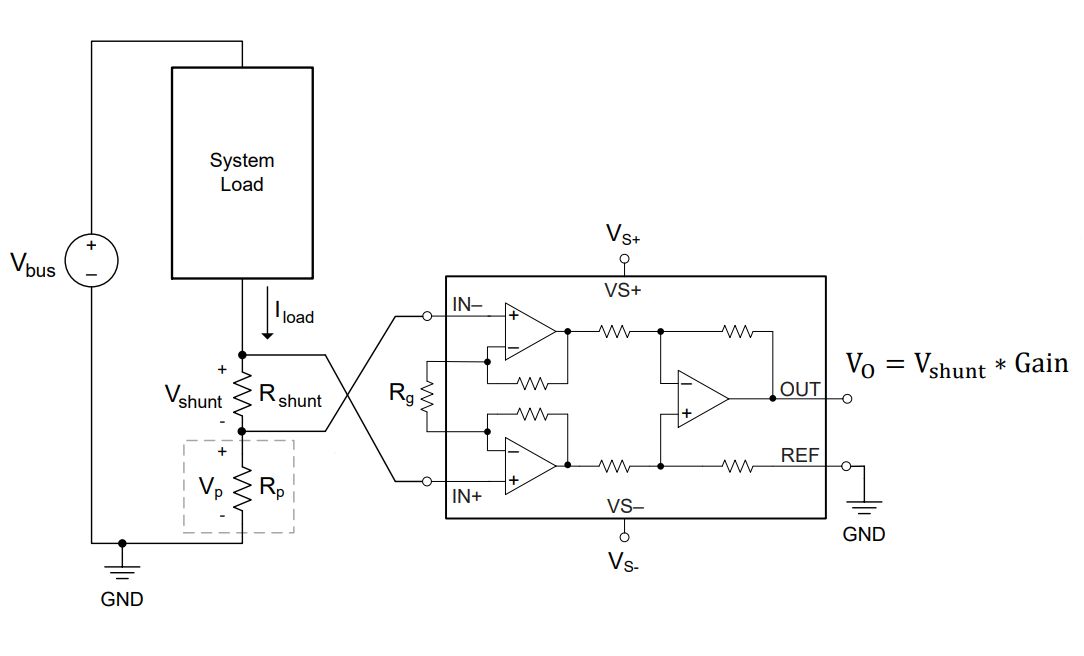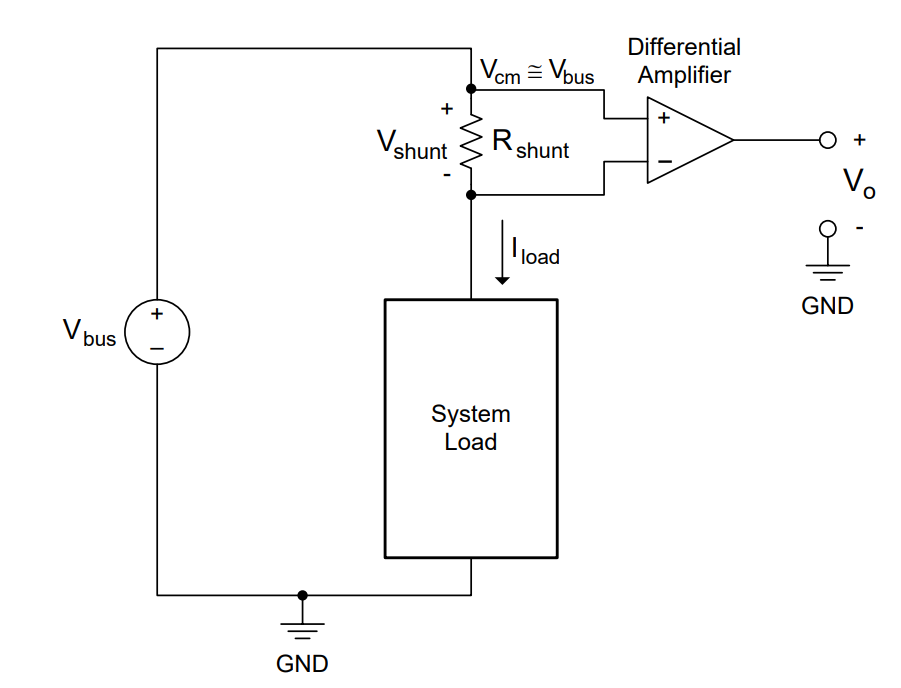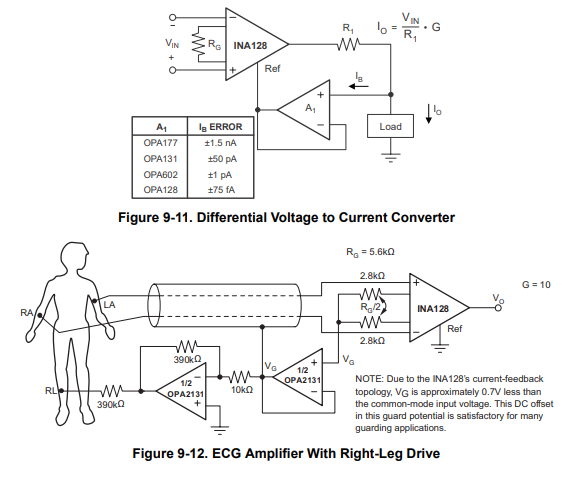Instrumentation Amplifiers
Theory

Instrumentation Amplifiers (INA) are an improvement on the differential amplifier for applications needing high input impedance, gain, CMRR, and low noise. They work on the principle of taking an existing differential amplifier and adding non-inverting amplifiers to the differential input. By adding resistor Rg, gain can be applied to the differential signal. If the gain resistor is omitted, the input amplifiers become voltage followers and the gain of the system is 1. High CMRR and low noise is only available when a large gain is applied, as Rg scales the signal to noise ratio of the input stage and diminishes reliance on U3 for common mode rejection.
Applications
Current Sensing

Low-side current sensing with Instrumentation amplifier and equation 3.
Instrumentation amplifiers are prime candidates for current sensing devices for their low noise, high impedance, and high gain properties. Shunt current sensing requires observing a differential voltage across a known resistance somewhere within a circuit loop. Using Ohm’s law and the gain of the instrumentation amplifier, you can easily calculate current through the known shunt resistance. The configurable gain of the instrumentation amplifier makes the circuit versatile for a variety of shunt resistances. The high input impedance also allows for very small currents to be measured [1].

Generally, a sense resistor is connected between the load and ground for low-side sensing, or between the supply and load for high-side sensing. There are advantages and disadvantages to both high and low side current sensing. Low side sensing is easier to implement, inexpensive, and can be implemented with a single-ended configuration. However, this setup removes direct access to ground and cannot sense shorts. High-side current sensing fixes issues seen from the previous method but creates entirely new ones in the process. Sensing from the high side no longer disconnects ground and allows for short circuit detection. However, the device will be working at higher potentials and can have a significant voltage swing depending on the load and source voltage.
Further applications

Instrumentation amplifiers are fantastic devices for applications requiring observation of a signal without disturbing it. However, they are costly devices compared to a typical op-amp, and the INA circuit is hard to recreate off chip without matched pair components. Features such as CMRR and noise reduction would be lost as a result. ADCs, balanced audio, current sensing, and electrocardiography (ECG) machines are some of the many applications that utilize the benefits of instrumentation amplifiers.

References
- 1(1,2)
“INA128 Datasheet,” Analog | Embedded Processing | Semiconductor Company | ti.com. [Online]. Available: https://www.ti.com/lit/ds/symlink/ina128.pdf. [Accessed: 13-Mar-2023].
- 2
P. Horowitz and W. Hill, “Chapter 5: Precision Circuits,” in The Art of Electronics, New York: Cambridge University Press, 2022.
- 3(1,2)
“Current Sensing with Different Types of Amplifiers,” Current sense amplifiers | TI.com, 05-Jun-2020. [Online]. Available: https://www.ti.com/video/series/ti-precision-labs-current-sense-amplifiers.html. [Accessed: 14-Mar-2023].